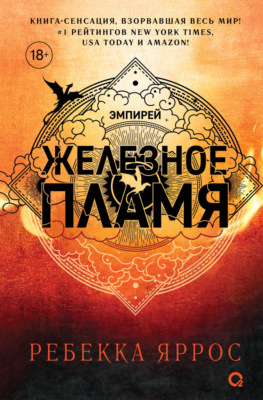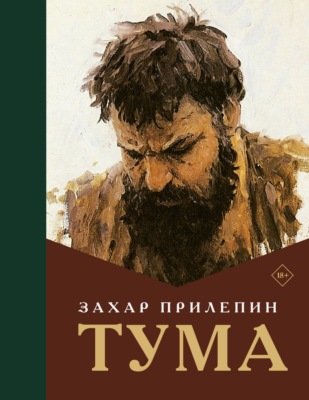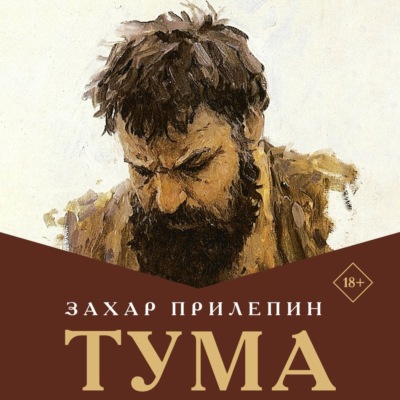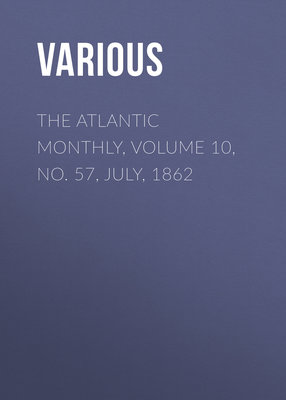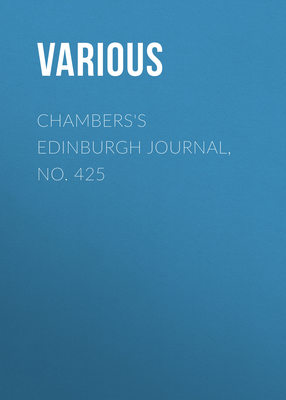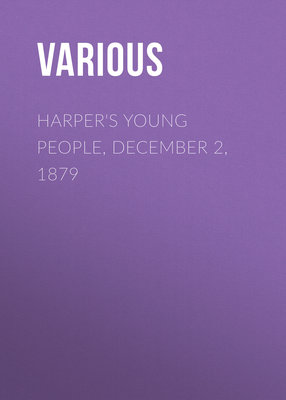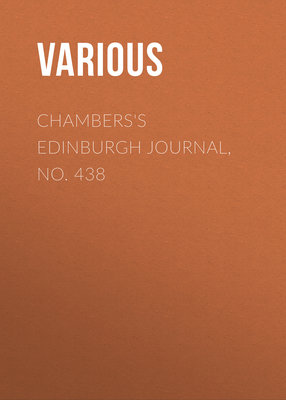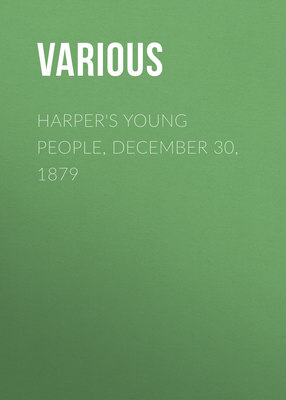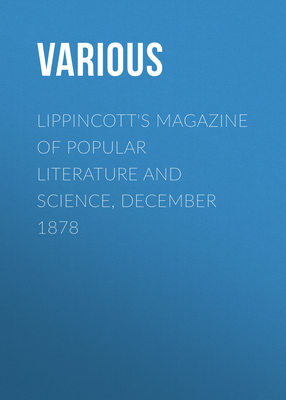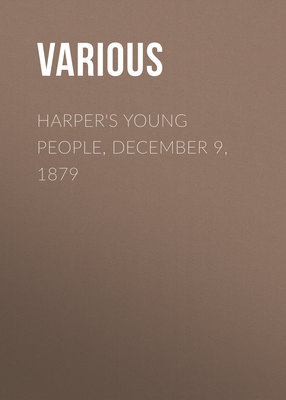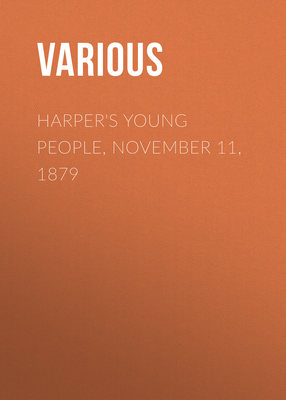Loe raamatut: «Lippincott's Magazine of Popular Literature and Science, Vol. 22, August, 1878», lehekülg 2
The gypsies have in their wagons or following in their train small black dogs of temper unparalleled for ugliness. It is impossible to approach a Tsigane tent or wagon without encountering a swarm of these diminutive creatures, whose rage is not only amusing, but sometimes rather appalling to contemplate. Driving rapidly by a camp one morning in a farmer's cart drawn by two stout horses adorned with jingling bells, I was followed by a pack of these dark-skinned animals. The bells awoke such rage within them that they seemed insane under its influence. As they leaped and snapped around me, I felt like some traveller in a Russian forest pursued by hungry wolves. A dog scarcely six inches high, and but twice as long, would spring from the ground as if a pound of dynamite had exploded beneath him, and would make a desperate effort to throw himself into the wagon. Another, howling in impotent anger, would jump full at a horse's throat, would roll beneath the feet of the team, but in some miraculous fashion would escape unhurt, and would scramble upon a bank to try again. It was a real relief when the discouraged pack fell away. Had I shot one of the animals, the gypsies would have found a way to avenge the death of their enterprising though somewhat too zealous camp-follower. Animals everywhere on these border-lines of the Orient are treated with much more tenderness than men and women are. The grandee who would scowl furiously in this wild region of the Banat if the peasants did not stand by the roadside and doff their hats in token of respect and submission as he whirled by in his carriage, would not kick a dog out of his way, and would manifest the utmost tenderness for his horses.
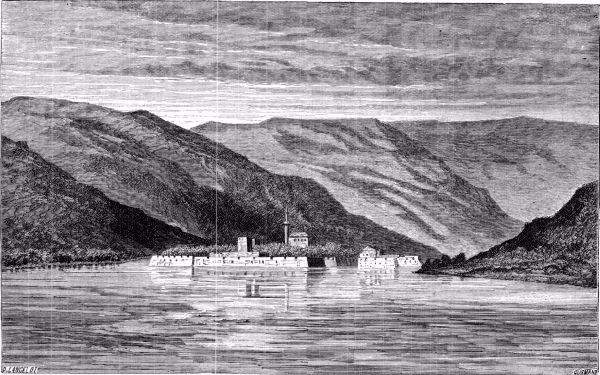
ORSOVA.
Much as the Hungarian inhabitants of the Banat hate the Roumanians, they do not fail to appreciate the commercial advantages which will follow on the union of the two countries by rail. Pretty Orsova may in due time become a bustling town filled with grain- and coal-dépôts and with small manufactories. The railway from Verciorova on the frontier runs through the large towns Pitesti and Craiova on its way to Bucharest. It is a marvellous railroad: it climbs hills, descends into deep gullies, and has as little of the air-line about it as a great river has, for the contractors built it on the principle of "keeping near the surface," and they much preferred climbing ten high mountains to cutting one tunnel. Craiova takes its name, according to a somewhat misty legend, from John Assan, who was one of the Romano-Bulgarian kings, Craiova being a corruption of Crai Ivan ("King John"). This John was the same who drank his wine from a cup made out of the skull of the unlucky emperor Baldwin I. The old bans of Craiova gave their title to the Roumanian silver pieces now known as bañi. Slatina, farther down the line, on the river Altu (the Aluta of the ancients), is a pretty town, where a proud and brave community love to recite to the stranger the valorous deeds of their ancestors. It is the centre from which have spread out most of the modern revolutionary movements in Roumania. "Little Wallachia," in which Slatina stands, is rich in well-tilled fields and uplands covered with fat cattle: it is as fertile as Kansas, and its people seemed to me more agreeable and energetic than those in and around Bucharest.
He who clings to the steamers plying up and down the Danube sees much romantic scenery and many curious types, but he loses all the real charm of travel in these regions. The future tourist on his way to or from Bulgaria and the battle-fields of the "new crusade" will be wise if he journeys leisurely by farm-wagon—he will not be likely to find a carriage—along the Hungarian bank of the stream. I made the journey in April, when in that gentle southward climate the wayside was already radiant with flowers and the mellow sunshine was unbroken by cloud or rain. There were discomfort and dust, but there was a rare pleasure in the arrival at a quaint inn whose exterior front, boldly asserting itself in the bolder row of house-fronts in a long village street, was uninviting enough, but the interior of which was charming. In such a hostelry I always found the wharfmaster, in green coat and cap, asleep in an arm-chair, with the burgomaster and one or two idle landed proprietors sitting near him at a card-table, enveloped in such a cloud of smoke that one could scarcely see the long-necked flasks of white wine which they were rapidly emptying. The host was a massive man with bulbous nose and sleepy eyes: he responded to all questions with a stare and the statement that he did not know, and seemed anxious to leave everything in doubt until the latest moment possible. His daughter, who was brighter and less dubious in her responses than her father, was a slight girl with lustrous black eyes, wistful lips, a perfect form, and black hair covered with a linen cloth that the dust might not come near its glossy threads. When she made her appearance, flashing out of a huge dark room which was stone paved and arched overhead, and in which peasants sat drinking sour beer, she seemed like a ray of sunshine in the middle of night. But there was more dignity about her than is to be found in most sunbeams: she was modest and civil in answer, but understood no compliments. There was something of the princess-reduced-in-circumstances in her demeanor. A royal supper could she serve, and the linen which she spread on the small wooden table in the back courtyard smelled of lavender. I took my dinners, after the long days' rides, in inns which commanded delicious views of the Danube—points where willows overhung the rushing stream, or where crags towered above it, or where it flowed in smooth yet resistless might through plains in which hundreds of peasants were toiling, their red-and-white costumes contrasting sharply with the brilliant blue of the sky and the tender green of the foliage.

BELGRADE, FROM SEMLIN.
If the inns were uniformly cleanly and agreeable, as much could not be said for the villages, which were sometimes decidedly dirty. The cottages of the peasants—that is, of the agricultural laborers—were windowless to a degree which led me to look for a small- and dull-eyed race, but the eloquent orbs of youths and maidens in all this Banat land are rarely equalled in beauty. I found it in my heart to object to the omnipresent swine. These cheerful animals were sometimes so domesticated that they followed their masters and mistresses afield in the morning. In this section of Hungary, as indeed in most parts of Europe, the farm-houses are all huddled together in compact villages, and the lands tilled by the dwellers in these communities extend for miles around them. At dawn the procession of laborers goes forth, and at sunset it returns. Nothing can give a better idea of rural simplicity and peace than the return of the peasants of a hamlet at eventide from their vineyards and meadows. Just as the sun was deluging the broad Danube with glory before relinquishing the current to the twilight's shades I came, in the soft April evening, into the neighborhood of Drenkova. A tranquil afterglow was here and there visible near the hills, which warded off the sun's passionate farewell glances at the vines and flowers. Beside the way, on the green banks, sat groups of children, clad with paradisiacal simplicity, awaiting their fathers and mothers. At a vineyard's hedge a sweet girl, tall, stately and melancholy, was twining a garland in the cap of a stout young fellow who rested one broad hand lightly upon her shoulder. Old women, bent and wrinkled, hobbled out from the fields, getting help from their sons or grandsons. Sometimes I met a shaggy white horse drawing a cart in which a dozen sonsie lasses, their faces browned by wind and their tresses blown back from their brows in most bewitching manner by the libertine breeze, were jolting homeward, singing as they went. The young men in their loose linen garments, with their primitive hoes and spades on their shoulders, were as goodly specimens of manly strength and beauty as one could wish to look upon. It hurt me to see them stand humbly ranged in rows as I passed. But it was pleasant to note the fervor with which they knelt around the cross rearing its sainted form amid the waving grasses. They knew nothing of the outer world, save that from time to time the emperor claimed certain of their number for his service, and that perhaps their lot might lead them to the great city of Buda-Pesth. Everywhere as far as the eye could reach the land was cultivated with greatest care, and plenty seemed the lot of all. The peasant lived in an ugly and windowless house because his father and grandfather had done so before him, not because it was necessary. It was odd to see girls tall as Dian, and as fair, bending their pretty bodies to come out of the contemptible little apertures in the peasant-houses called "doors."
Drenkova is a long street of low cottages, with here and there a two-story mansion to denote that the proprietors of the land reside there. As I approached the entrance to this street I saw a most remarkable train coming to meet me. One glance told me that it was a large company of gypsies who had come up from Roumania, and were going northward in search of work or plunder. My driver drew rein, and we allowed the swart Bohemians to pass on—a courtesy which was gracefully acknowledged with a singularly sweet smile from the driver of the first cart. There were about two hundred men and women in this wagon-train, and I verily believe that there were twice as many children. Each cart, drawn by a small Roumanian pony, contained two or three families huddled together, and seemingly lost in contemplation of the beautiful sunset, for your real gypsy is a keen admirer of Nature and her charms. Some of the women were intensely hideous: age had made them as unattractive as in youth they had been pretty; others were graceful and well-formed. Many wore but a single garment. The men were wilder than any that I had ever before seen: their matted hair, their thick lips and their dark eyes gave them almost the appearance of negroes. One or two of them had been foraging, and bore sheeps' heads and hares which they had purchased or "taken" in the village. They halted as soon as they had passed me, and prepared to go into camp; so I waited a little to observe them. During the process of arranging the carts for the night one of the women became enraged at the father of her brood because he would not aid her in the preparation of the simple tent under which the family was to repose. The woman ran to him, clenching her fist and screaming forth invective which, I am convinced, had I understood it and had it been directed at me, I should have found extremely disagreeable. After thus lashing the culprit with language for some time, she broke forth into screams and danced frantically around him. He arose, visibly disturbed, and I fancied that his savage nature would come uppermost, and that he might be impelled to give her a brutal beating. But he, on the contrary, advanced leisurely toward her and spat upon the ground with an expression of extreme contempt. She seemed to feel this much more than she would have felt a blow, and her fury redoubled. She likewise spat; he again repeated the contemptuous act; and after both had gratified the anger which was consuming them, they walked off in different directions. The battle was over, and I was not sorry to notice a few minutes later that paterfamilias had thought better of his conduct, and was himself spreading the tent and setting forth his wandering Lares and Penates.
A few hundred yards from the point where these wanderers had settled for the night I found some rude huts in which other gypsies were residing permanently. These huts were mere shelters placed against steep banks or hedges, and within there was no furniture save one or two blankets, a camp-kettle and some wicker baskets. Young girls twelve or thirteen years of age crouched naked about a smouldering fire. They did not seem unhappy or hungry; and none of these strange people paid any attention to me as I drove on to the inn, which, oddly enough, was at some distance from the main village, hard by the Danube side, in a gully between the mountains, where coal-barges lay moored. The Servian Mountains, covered from base to summit with dense forests, cast a deep gloom over the vale. In a garden on a terrace behind the inn, by the light of a flickering candle, I ate a frugal dinner, and went to bed much impressed by the darkness, in such striking contrast to the delightful and picturesque scenes through which I had wandered all day.
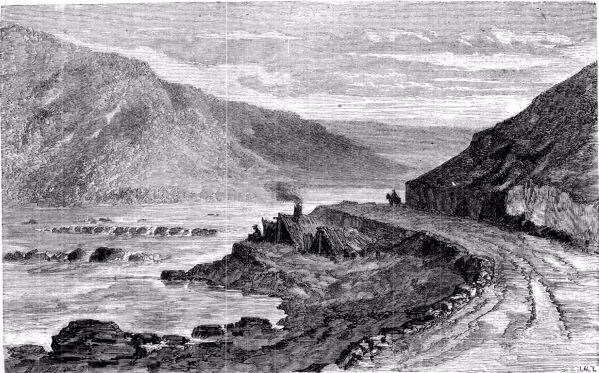
THE IRON GATES.
But I speedily forgot this next morning, when the landlord informed me that, instead of toiling over the road along the crags to Orsova, whither I was returning, I could embark on a tug-boat bound for that cheerful spot, and could thus inspect the grand scenery of the Iron Gates from the river. The swift express-boats which in time of peace run from Vienna to Rustchuk whisk the traveller so rapidly through these famous defiles that he sees little else than a panorama of high rocky walls. But the slow-moving and clumsy tug, with its train of barges attached, offers better facilities to the lover of natural beauty. We had dropped down only a short distance below Drenkova before we found the river-path filled with eddies, miniature whirlpools, denoting the vicinity of the gorges into which the great current is compressed. These whirlpools all have names: one is called the "Buffalo;" a second, Kerdaps; a third is known as the "Devourer." The Turks have a healthy awe of this passage, which in old times was a terrible trial to these stupid and always inefficient navigators. For three or four hours we ran in the shade of mighty walls of porphyry and granite, on whose tops were forests of oaks and elms. High up on cliffs around which the eagles circle, and low in glens where one sometimes sees a bear swimming, the sun threw a flood of mellow glory. I could fancy that the veins of red porphyry running along the face of the granite were blood-stains, the tragic memorials of ancient battles. For, wild and inaccessible as this region seems, it has been fought over and through in sternest fashion. Perched on a little promontory on the Servian side is the tiny town of Poretch, where the brave shepherds and swineherds fought the Turk, against whose oppression they had risen, until they were overwhelmed by numbers, and their leader, Hadji Nikolos, lost his head. The Austrians point out with pride the cave on the tremendous flank of Mount Choukourou where, two centuries ago, an Austrian general at the head of seven hundred men, all that was left to him of a goodly army, sustained a three months' siege against large Turkish forces. This cave is perched high above the road at a point where it absolutely commands it, and the government of to-day, realizing its importance, has had it fortified and furnished with walls pierced by loopholes. Trajan fought his way through these defiles in the very infancy of the Christian era; and in memory of his first splendid campaign against the Dacians he carved in the solid rock the letters, some of which are still visible, and which, by their very grandiloquence, offer a mournful commentary on the fleeting nature of human greatness. Little did he think when his eyes rested lovingly on this inscription, beginning—
IMP. CÆS. D. NERVÆ FILIUS NERVA
TRAJANUS. GERM. PONT. MAXIMUS
—that Time with profane hand would wipe out the memory of many of his glories and would undo all the work that he had done.
On we drifted, through huge landlocked lakes, out of which there seemed no issue until we chanced upon a miraculous corner where there was an outlet frowned upon by angry rocks; on to the "Caldron," as the Turks called the most imposing portion of the gorge; on through an amphitheatre where densely-wooded mountains on either side were reflected in smooth water; on beneath masses that appeared about to topple, and over shallows where it looked as if we must be grounded; on round a bluff which had hidden the sudden opening of the valley into a broad sweep, and which had hindered us from seeing Orsova the Fair nestling closely to her beloved mountains.
Edward King.
THE PARIS EXPOSITION OF 1878
I.—BUILDINGS AND GROUNDS
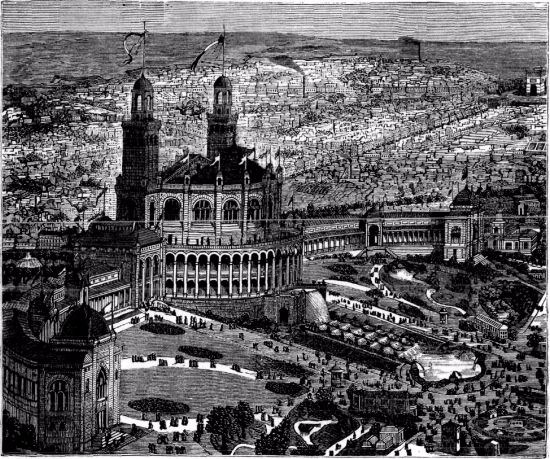
THE TROCADÉRO AND GROUNDS.
It is customary to speak of things by comparison, and the question is constantly propounded here, as it will be to returned Americans: "How does the Exposition compare with the Centennial of 1876?" This is not to be answered by vague generalities nor by sweeping statements.
It must of course be true that a great nation could not fail to make interesting an object upon which it has lavished money and which has obtained the co-operation of the principal foreign nations. So much is true equally of Philadelphia and Paris, and the merits of each are such that comparisons may be instituted which shall be derogatory to neither.
The scale of each is immense, and the buildings of both well filled and overflowing into numerous annexes. Fairmount had the advantage of breadth of ground for all comers. The Champ de Mars is but little over one hundred acres in area, while the portion of Fairmount Park conceded to the Exposition was two hundred and sixty acres.
The Champ de Mars is simply crowded with buildings, and is hemmed in by houses except at the end where it abuts upon the Seine. The space between the river and the main building is the only breathing-ground on that side of the river, the only place large enough for a band to play in the open air with allowance for a moderate crowd of listeners; and even this portion has a far larger number of detached houses than elegance or convenience of view would dictate. It was otherwise in Philadelphia, where the ample room gave a sensation of freedom, and the wide lawns, and even rustic hollows, permitted rambles, picnic lunches and parties. Herein consists one of the most striking features of dissimilarity between the Philadelphia and Paris expositions. The former had plenty of room—the latter has insufficient. The former, with the exception of the Main and Machinery Buildings, with a few adjuncts, and the Art-Gallery, a little retired from the Main Building, had its structures dotted over a wide expanse bordering its lakes or along an encircling drive. For want of any other sufficient opportunity to display the architecture of the countries assembled, one of the interior façades of the Paris building has a series of characteristic house-fronts looking upon an allée of but fifty feet in width, which is dignified by the title of "The Street of Nations."
This tight packing has, however, one compensation: it has permitted a degree of finish to the grounds far superior to what was possible at Philadelphia. All the space inside the enclosure is admirably laid out in walks and parterres, and the two open places between the principal buildings and the Seine display a truly beautiful and picturesque garden, with winding walks, ponds, fountains, artificial mounds with clumps of trees and evergreens, grottos, statues, trickling rivulets with ferns and mosses, cozy dells with little cascades, and the walks in the more open spots bordered with charming flowers and plants of rich leafage. The lawns are something marvellous in the speed with which they have been created. Thousands of tons, as it seems, of rich mould have been deposited and levelled or laid upon the swelling tumuli which border the more open space, and the grass grows with denseness and vigor under the stimulating treatment of phosphates, its greenness mocking the emerald, and forming a most vivid setting for the darker leaves of the tree-rhododendrons, whose globular masses of bloom look like balls of fire.
After all, it is only justice to mention two things at Philadelphia which render it memorable among exhibitions, and which, I observe in conversation with foreigners who visited it and are here now, made a great and lasting impression. I do not mean that it had but two, but these are so frequently referred to that it is fair to cite them specially, even at the risk of a little repetition as to the first—namely, the wide area and beautiful situation, with the views of hill and river; the means of approach by carriage-drives through the lovely Park, those so disposed being able to drive for miles along the water-side, in the groves and to various commanding points of view on their way to such of the remoter entrances as they might elect; the railway, which enabled one not only to see the grounds without fatigue, but while resting from the pedestrian work of the interiors of the buildings; the sense of comfort in being able to retire for a while to sylvan or floral retreats to digest the thoughts and rest from seeing. Secondly, the various and ample accommodations offered to the public—the postal and telegraph facilities; the Department of Public Comfort; the lavatories and retiring-rooms so abundantly furnished. A Moresque gentleman in turban who was in Philadelphia fairly rubbed his hands as he referred to the lavish opportunities for washing which were freely given in Philadelphia, and contrasted them with the state of things here, where it costs ten cents to wash your hands, and the supply of water is but meagre at that. But he is an African, you know, and had learned to appreciate water, and plenty of it, in a land where the washing of the face, hands and feet is among the first civilities offered to a stranger.
A few figures, dry enough in themselves if there were nothing more, will serve as a means of comparison of the relative spaces under cover. The building on the Champ de Mars is stated officially to be 650 mètres long by 350 mètres broad, which, reduced to our measurement, will give 2,447,536 square feet. Deducting 150,000 feet for two enclosed alleys, the area under roof will be 2,297,536 feet. The area of the five principal buildings at the Centennial Exhibition was:

So that the difference in favor of Paris is 327,127 feet. In round numbers, the Paris Exposition building is one-fifth larger than the united areas of the five principal buildings at the Centennial. Without making a close calculation of the areas of the annexes and detached buildings either of Philadelphia or Paris, I am disposed to think that the 1876 Exhibition was not in excess of the present one in this respect. Either exceeds, both in the main buildings and the swarm of detached structures, any preceding exhibitions. The difference between the Paris exhibitions of 1867 and 1878 is as 153 is to 240: the London building of 1862 would bear to both the proportion of 92, without any important annexes.
The high ground on the right bank of the Seine is occupied by the Trocadéro Palace, which faces that on the Champ de Mars, each building being about five hundred yards from the bank of the river, which flows in so deep a depression that it is visible from neither building, and the grounds between the two appear to be continuous, though the bridge suggests the contrary.
The cascade in front of the Trocadéro occupies the site of the old steps by which the steep hill was ascended, but the ground nearer to the Seine has been so raised that the river-roads on each side run in subways spanned by bridges, thus permitting free use of the great thoroughfares without impeding communication between the two portions of the Exposition. Indeed, they appear as one viewed in either direction, notwithstanding the intervening streets and wide and rapid river.
The change in the shape of the Trocadéro hill to bring it into a symmetrical position in front of the Champ de Mars has required the quarrying of twenty-four thousand cubic mètres of rock, leaving a rough scarp on the northern edge quarried into steps, walks and grottos, with flowers, ferns and mosses cunningly planted on the ledge and creepers on the walls.
The Trocadéro Palace is the most striking architectural feature of the Exposition. Standing on a level one hundred and six feet above the Quai de Billy and overlooking the city of Paris, the dome and glittering minarets of the building are visible from many miles' distance. It is not easy to describe its architecture, though it is called "half Moorish, half Renaissance;" which is not very definite. It has a large rotunda capable of accommodating seven thousand persons, and the river-front has two spacious corridors on as many stories. The central building is flanked by two tall square campaniles, and from its sides extend long wings which curve toward the river: these have colonnades and terraces in front overlooking the garden, its picturesque and grotesque cottages and pavilions, its fountains and its parterres of gay flowers.
The Trocadéro has been purchased by the town council of Paris, and is to be a permanent structure, its flanking salons, forty-two feet wide, being known as "Galéries de l'Art Rétrospective." Its collection is to form a history of civilization, and will probably include the Egyptian, Assyrian and similar collections from the Louvre, as well as the Ethnological, which is at St. Germain. It is designed to represent in chronological order ancient and historic art, both liberal and mechanical, with the furniture, arms and tools of the Middle Ages and Renaissance, arms, implements and fabrics from the East, Africa and Oceanica, and a collection of musical instruments of all ages and countries. This is an ambitious programme, but will no doubt be well accomplished. Its general color is that of the beautiful stone of this region, a delicate cream. The uniformity is broken by great boldness and variety in the structural form of the building, and by its pillars, deep colonnades and heavy cornices, giving shadows which prevent monotony of tint.
While artists and architects disagree like the proverbial doctors, and purists shudder at the jumble of orders, periods and nationalities, a tyro may well hesitate. An opinion of the building will no more suit everybody than does the building itself; but one cannot entirely forfeit one's reputation for taste, for each will find some agreeing judgments. All must acknowledge that it has a gala air. Its central dome, tall minarets and wings widespread toward the river crown the height and seem to foster the beauties they partly enclose.
The circular corridor of the rotunda is surmounted by the Muses and other figures typical of the future purposes of the building. The rotunda-walls are themselves castellated, the towers being interplaced with windows of Saracenic arched form. The béton pavement of the corridors and balcony is made of annular fragments, facets upward, of black, red, white and slate-colored marbles, feldspar and other stones. It is as hard as natural rock and as smooth as half-polished marble. A tessellated fret pattern is made along the borders of the corridor floor, consisting of triple rows of smooth cubes of marble inserted in the cement. The square balusters are of red-mottled marble, with base and entablature of dull rose. The square corner pillars support figures allegorizing the six divisions of the earth.
The vestibules at the sides of the tower are open east and west for the passage to and from the garden, and at the sides have doors which admit to the Grande Salle and the flanking galleries respectively. The interior red scagliola columns of the vestibule are in pairs, with white bases and capitals, the latter combining the lotus-leaf with the volute. The soffits of the ceiling have panels of yellow with orange border, contrasting with iron beams painted a chocolate brown.
The uniformity of the long and curved colonnades which form the wings of the building is broken by square porticoes, which have entrances to the galleries and small terraces in front, with steps leading to the garden. The wall back of the white pillars of this long promenade is painted of a warm but not glaring red. The roof is of tile and skylight. The base of the colonnade beneath the balustrade and pillars is a rough concrete wall hidden by a sloping bank of evergreens, upon which the eye rests pleasantly amid so much wall-space and architectural decoration.
In front of the corridor of the rotunda is a projecting balcony, with six gigantic female figures on the corners of its balustrade representing Europe, Asia, North and South America, Africa and Australia. These statues are of metal gilt, and typify by countenance and accompanying emblems the portions of the globe they represent. Europe is an armed figure with sword: at her side are the caduceus, olive-branch, books and easel. Asia has a spear and a couch with elephant heads. Africa is a negress, with the characteristic grass-rope basket containing dates. North America is an Indian, but the civilization of the land is indicated by an anchor, beehive and cog-wheel. Australia is a gin, with a waddy, boomerang and kangaroo. South America sits on a cotton-bale, has a condor by her side, and at her feet are tropical fruits—pineapples, bananas and brazil-nuts.
The balustrade of the balcony is of a light marble with faint red mottling, and in front of it is a boiling pool of water at the level of the hand-rail. A large volume of water overflows the curved edge of this pool and falls twenty feet into a basin beneath, the first of a series of nine whose overflows in successive steps form the cascade technically known as a "château d'eau," the finest of which description of ornamental waterworks is at the Château St. Cloud, one of the mementos of the fatal luxury which precipitated the Revolution of 1789. The cascade of St. Cloud plays once a month for half an hour—that at the Exposition during the whole day. From one jet at St. Cloud issue five thousand gallons per minute: the supply at the Exposition is twenty-four thousand cubic feet per hour. Most of this water runs over the edge of the balcony-pool, and the fall of fifty-six cubic feet per second a distance of twenty feet creates no mean roar and mist in the archway beneath the balcony, where visitors walk behind the falls and look through the sheet of water. It is not fair to compare at all points the cascades of the Exposition and St. Cloud. The amount of water may probably not be greatly different, but the fantastic profusion of spiratory objects and long succession of overflow basins and urns in the works at the château has no parallel in those of the Trocadéro. The cascades of St. Cloud are disappointing: the object should be to add to landscape effect by water in motion, and the principle is entirely missed when the water is made a mere accessory to a series of stone steps, jars and monsters. Steps are made to walk upon, jars to hold water. An interminable series of either with water poured over them is not the work of a genius. If the first suggestion to the mind be that a thing is a stairway, the fact that it is made too wet to walk upon does not constitute it a beautiful cascade. A row of jars on pedestals around a grass-plat has a pretty effect, because they do or may hold flowers, but to set several rows of them on a hillside and turn on the water is not art. As an admirable illustration of fantasy well wrought out the Fountain of Latona at Versailles may be cited. There Latona, having appealed to Jupiter against the inhabitants of Argos, who had deprived her of water, is deluged by jets from the unfortunates, who appear in various degrees of transformation into frogs.





